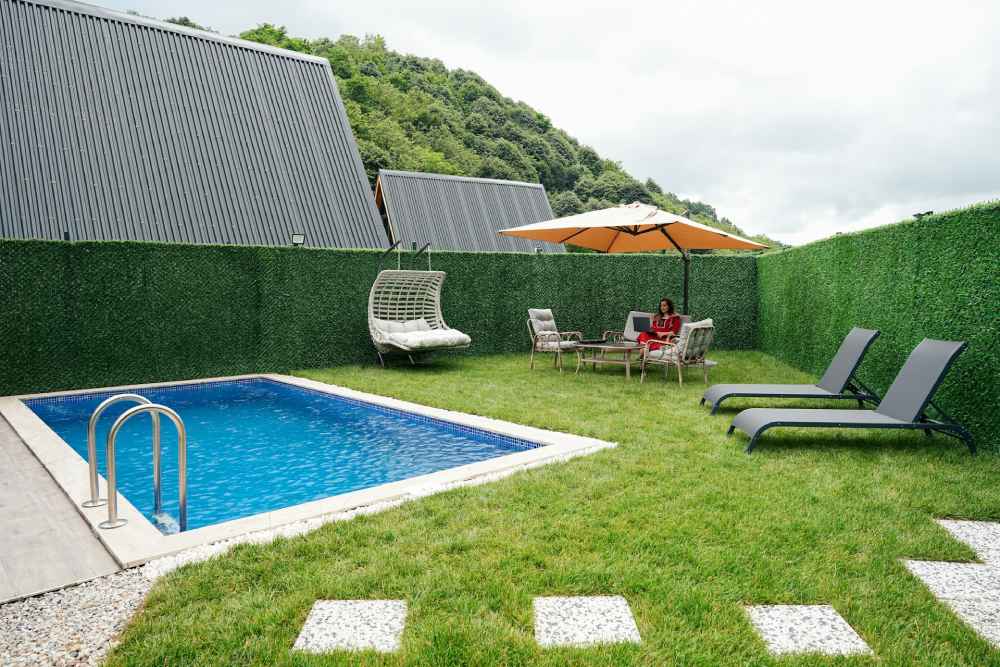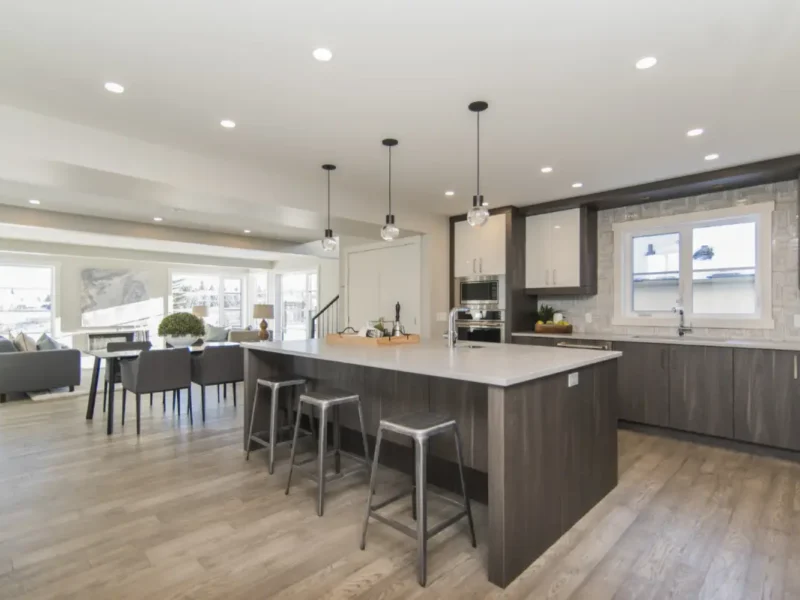Creating a stunning swimming pool in your backyard is an exciting project that can elevate your outdoor living experience and add significant value to your property. Whether you’re envisioning a tranquil retreat or a vibrant entertainment space, designing the perfect pool requires careful consideration and planning. This comprehensive guide will walk you through the essential steps to bring your dream pool to life.
Contents
- 1 Understanding Your Vision and Space
- 2 Selecting the Ideal Pool Type
- 3 Crafting the Perfect Pool Shape
- 4 Determining Depth and Size
- 5 Incorporating Water Features
- 6 Selecting Pool Finishes
- 7 Designing the Perfect Pool Surround
- 8 Lighting Your Aquatic Paradise
- 9 Prioritizing Safety Features
- 10 Embracing Eco-Friendly Options
- 11 Planning for Easy Maintenance
- 12 Navigating Legal Requirements
- 13 Bringing Your Design to Life
- 14 Conclusion
Understanding Your Vision and Space
Before diving into design specifics, take time to clarify your vision and assess your space:
– Available yard area and its topography
– Desired atmosphere (tropical paradise, modern oasis, natural lagoon)
– Primary uses (relaxation, exercise, entertaining)
– Integration with existing landscaping and architecture
– Local climate considerations
A clear understanding of these factors will guide your decisions throughout the design process.
Selecting the Ideal Pool Type
Choose between these main pool types based on your needs and preferences:
In-ground Pools:
– Concrete: Highly customizable, durable, but more expensive
– Fiberglass: Quick installation, low maintenance, limited shapes
– Vinyl: Cost-effective, versatile, may require liner replacement
Above-ground Pools:
– More affordable and easier to install
– Can be moved or removed if needed
– Limited design options compared to in-ground pools
Crafting the Perfect Pool Shape
Popular pool shapes include:
– Rectangle: Classic and versatile, ideal for lap swimming
– Freeform: Natural-looking, mimics ponds or lagoons
– L-shape: Separates shallow and deep areas
– Kidney: Soft curves, complements landscaping well
– Geometric: Modern look with clean lines and angles
Choose a shape that complements your home’s architecture and fits your intended use.
Determining Depth and Size
Consider these factors when deciding on pool depth and size:
– Intended activities (diving, water sports, wading)
– User demographics (children, adults, seniors)
– Safety considerations
– Local building codes and regulations
A varied depth can accommodate different activities and users.
Incorporating Water Features
Enhance your pool’s aesthetic appeal with water features:
– Waterfalls or cascades
– Fountains
– Bubblers
– Laminar jets
– Infinity edges
These features add visual interest and soothing sounds to your pool area.
Selecting Pool Finishes
Choose finishes that align with your design vision:
– Interior finish: Plaster, pebble, tile, or vinyl
– Coping: The material that caps the pool edge
– Decking: The area surrounding the pool
Consider durability, slip-resistance, and heat absorption when selecting materials.
Designing the Perfect Pool Surround
Create an inviting poolside area with:
– Comfortable lounge furniture
– Shade options (umbrellas, pergolas, cabanas)
– Outdoor kitchen or bar
– Fire pit or fireplace for cooler evenings
– Strategic landscaping for privacy and aesthetics
Lighting Your Aquatic Paradise
Well-planned lighting enhances safety and ambiance:
– Underwater lights for a magical nighttime glow
– Deck lighting for safe navigation
– Landscape lighting to highlight surrounding features
– Color-changing LED options for versatility
Prioritizing Safety Features
Incorporate essential safety elements:
– Secure fencing with self-latching gates
– Non-slip decking materials
– Pool covers for when not in use
– Clearly marked depth indicators
– Adequate lighting around the pool area
Embracing Eco-Friendly Options
Reduce your pool’s environmental impact with:
– Energy-efficient pumps and heaters
– Solar heating systems
– Saltwater chlorination
– Automatic pool covers to reduce evaporation
– Native, drought-resistant landscaping
These options can also lead to long-term cost savings.
Planning for Easy Maintenance
Design your pool with easy upkeep in mind:
– Efficient filtration and circulation systems
– Automated cleaning systems
– Easy-to-clean surfaces and materials
– Adequate storage for pool equipment
Research and comply with local regulations:
– Zoning laws and setback requirements
– Safety standards
– Building permits
– Homeowners association approvals
Working with a professional pool designer can help ensure compliance.
Bringing Your Design to Life
Once your design is finalized:
– Get multiple quotes from reputable pool contractors
– Review portfolios and check references
– Discuss timeline and potential challenges
– Plan for landscaping and finishing touches
Conclusion
Designing your dream swimming pool is a journey that combines creativity, practicality, and careful planning. By considering all aspects – from the initial vision to the final details – you can create a stunning aquatic retreat that enhances your lifestyle and becomes the centerpiece of your outdoor living space.
Whether you’re envisioning peaceful solo swims or lively pool parties, your custom-designed pool will be a source of joy, relaxation, and cherished memories for years to come. With thoughtful planning and execution, your backyard bliss will not only meet your immediate desires but also adapt to your changing needs, providing a lifetime of aquatic enjoyment.



